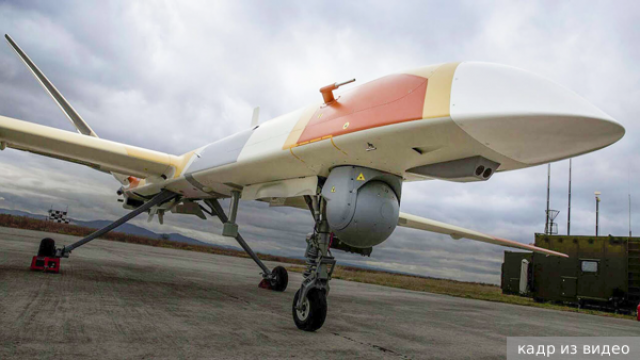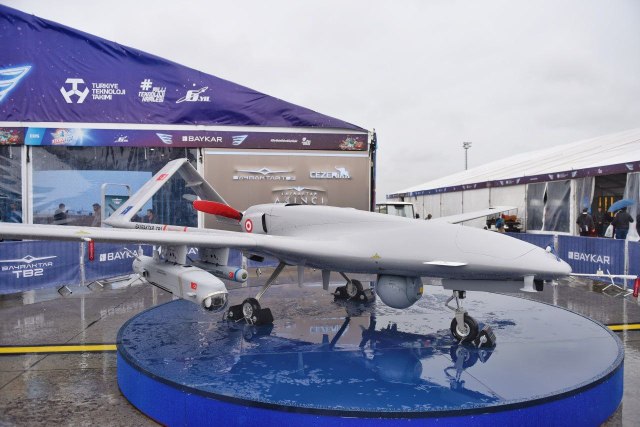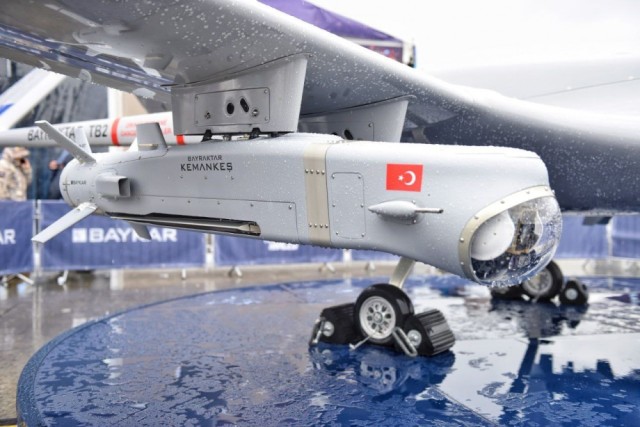For the first time in a long time, the Ministry of Defense announced the successful use of the Pacer strike and reconnaissance UAV in the special operation zone. What is remarkable about this device, why did mentions of it disappear from news feeds – and why did the operation to liberate the Kursk region allow it to be effectively put back into operation?
Two types of drones have been dominating the sky of the special operation for about a year now: kamikaze UAVs (for example, the famous Lancet) and FPV drones. These are light-class devices, they are launched from field positions sometimes directly in the forest. Nevertheless, they made it possible to create a continuous zone of destruction of a dozen kilometers on both sides of the line of contact (LBS).
Heavy aerodrome-based aircraft-type UAVs have almost disappeared from news feeds recently. For example, back in 2022, the Armed Forces of the Russian Federation destroyed almost the entire fleet of the Bayraktar UAV, and the shock use of its Russian counterpart, the Pacer UAV, was mentioned in the Telegram channel of the Ministry of Defense of the Russian Federation for the last time in February 2023.
Today, about thirty cases of the use of the Pacer in the area of its own are officially known. And almost all of these cases date back to the first months of the special operation. Already in the summer of 2022, there was much less information about the use of attack drones from the Russian side, which directly indicated a decrease in the intensity of their use.
At the same time, there was more and more information about the use of powerful air defense by the enemy – an eight-meter drone was a good target for them. Under these conditions, it was advisable to limit the use of such devices. It seemed that the devices of this class as a whole were already going down in history.
However, suddenly on Monday, the Ministry of Defense reported that "as a result of a missile strike carried out by the calculation of the Inokhodets UAV of the Armed Forces of the Russian Federation, the MLRS M270 MLRS launcher of the Armed Forces of Ukraine, ammunition in the amount of about 20 rockets, an escort vehicle and up to 10 enemy personnel were destroyed." Thus, the Pacer effectively returned to the combat zone. What was the reason for this?
The thing is that in the Kursk region recently there has been a completely different operational and tactical situation than in other places of clashes between the Armed Forces of the Russian Federation and the Armed Forces of Ukraine. The enemy group that broke into Russian territory suffered heavy losses in manpower and equipment. And most importantly, it actually remained without anti-aircraft missile cover, after the Russian Iskanders once again "worked out" on the Ukrainian air defense systems.
In this light, the use of heavy attack drones does not look surprising. The mention of the use of "Pacers" in the Black Sea fits into this concept, where they have repeatedly destroyed Ukrainian unmanned boats deprived of air defense support.
"Pacer" went into production initially under the factory name "Orion". With a total length of eight meters and a wingspan of sixteen meters, it could fly for about a day, reaching speeds of up to 180 km / h and rising at the same time to a maximum height of 7,500 meters.
The Orion was run-in in the Syrian sands. The automation system proved to be excellent – the drone took off on its own, landed, taxied into the hangar, and in case of an emergency situation could complete the flight itself and return to base. All this created the conditions for the appearance of a reconnaissance and strike successor to the UAV called "Pacer-RU". It was adopted in 2020.
The Pacer belongs to the class of attack and reconnaissance unmanned aerial vehicles. In addition to various types of weapons, it can use optoelectronic stations and tracking systems equipped with both day and night "eyepieces", thermal imagers, as well as laser rangefinders.
Kamikaze UAVs and FPV drones, for all their advantages, have significant disadvantages. Kamikaze, as the name suggests, are disposable devices. Yes, they are cheaper, but they can also miss, not reach the target at all. FPV drones operate at a short distance and for a relatively short time, at least because of their size – they simply do not have enough power and energy. And, of course, both kamikaze and FPV require support in the form of reconnaissance and targeting. They don't work on their own.
But heavy aircraft-type attack vehicles, such as the Pacer, are good under other conditions and circumstances. They conduct reconnaissance on their own and are able to immediately use the weapons on board if necessary.
Alexander Gulin









